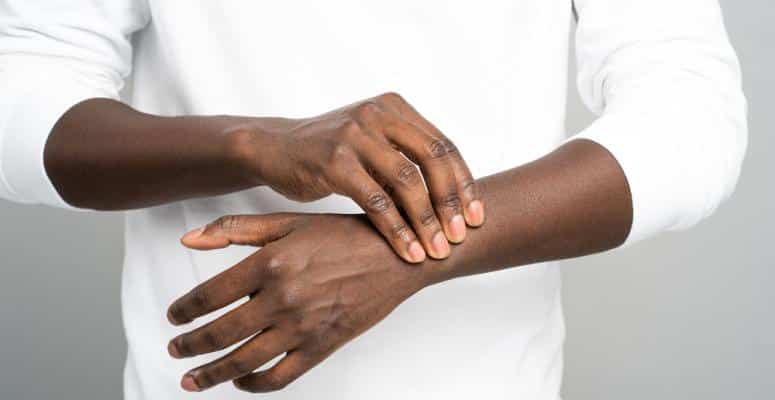This website uses cookies so that we can provide you with the best user experience possible. Cookie information is stored in your browser and performs functions such as recognising you when you return to our website and helping our team to understand which sections of the website you find most interesting and useful.
Wrist Ligament Injuries
Wrist ligament injuries can range from mild sprains, where the ligaments are stretched, to complete tears. Common causes include falls, sports injuries, and repetitive stress. Symptoms may include pain, swelling, decreased range of motion, and instability in the wrist. Treatment varies based on the severity of the injury. It can range from rest and immobilization to physical therapy and, in severe cases, surgery to repair the damaged ligaments.
Types of Wrist Ligament Injuries
Sprains: A sprain occurs when a ligament is stretched or torn due to excessive force or trauma. Depending on the extent of ligament damage, wrist sprains can range from mild (Grade I) to severe (Grade III).
TFCC Tear: The Triangular Fibrocartilage Complex (TFCC) is a group of ligaments and cartilage on the ulnar side of the wrist. Tears in the TFCC can occur due to trauma or degenerative changes and can cause pain and instability in the wrist.
Scapholunate Ligament Injury: The scapholunate ligament connects the scaphoid and lunate bones in the wrist. Injuries to this ligament, such as sprains or tears, can lead to instability and dysfunction in the wrist joint.
Lunotriquetral Ligament Injury: The lunotriquetral ligament connects the lunate and triquetral bones in the wrist. Injuries to this ligament can result in pain, instability, and limited range of motion in the wrist.

Expert Wrist LIGAMENT TEAR and injury treatment, call us today 703.591.0077

Dr. Stephen W. Pournaras is dedicated to providing exceptional care for wrist ligament injuries and conditions from diagnosis to recovery. If you have a wrist injury or chronic condition, please contact us at Fairoaks Ortho. Dr. Pournaras & our staff considerably understand the complex network of blood vessels, nerves, muscles, ligaments, tendons, and bones that make up your wrist.
Frequently Asked Questions About Wrist Ligament Repair
The Ligaments of Your Wrist
The wrist is a complex joint that provides a wide range of motion and flexibility, largely thanks to its intricate ligament structure. Ligaments are tough, fibrous tissues that connect bones to each other, providing stability and support to joints. In the wrist, several key ligaments play crucial roles in its function:
Collateral Ligaments
- Radial (Lateral) Collateral Ligament (RCL): Connects the end of the radius bone to the scaphoid and trapezium bones on the thumb side of the wrist, providing lateral stability.
- Ulnar (Medial) Collateral Ligament (UCL): Links the end of the ulna bone to the pisiform and triquetrum bones on the little finger side of the wrist, ensuring medial stability.
Volar (Palmar) Ligaments
- Palmar Radiocarpal Ligament: A broad ligament on the palm side of the wrist that connects the radius to the carpal bones (scaphoid, lunate, and triquetrum), contributing to overall wrist stability.
- Palmar Ulnocarpal Ligament: Extends from the ulna to the pisiform, triquetrum, and lunate bones, providing support on the ulnar side of the wrist.
Dorsal Ligaments
- Dorsal Radiocarpal Ligament: Located on the back of the wrist, this ligament connects the radius to several carpal bones (lunate, triquetrum, and capitate), aiding wrist extension stability.
- Dorsal Intercarpal Ligament: Supports the connections between the carpal bones on the back of the wrist, contributing to the stability of the carpal structure.
Intrinsic Ligaments
- Scapholunate Ligament: Connects the scaphoid and lunate bones, critical for maintaining proper motion and alignment between these bones.
- Lunotriquetral Ligament: Binds the lunate and triquetrum bones, important for coordinated movement between these carpal bones.
- Triquetrum-Hamate and Capitate Ligament: Supports the connection between the triquetrum, hamate, and capitate bones.
These ligaments work together to provide the wrist with a remarkable range of motion, including flexion, extension, abduction (radial deviation), and adduction (ulnar deviation). They also help protect the wrist joint from excessive movements that could lead to injury.
The goal is to reduce pain, inflammation, and instability while promoting healing and restoring function.
Non-Surgical Approaches:
Rest and Immobilization: Resting your injured wrist and avoiding activities that increase pain or strain on the ligaments are crucial for promoting healing. Immobilization with a splint or brace may be recommended to limit movement and support the injured ligaments.
Ice Therapy: Applying ice packs to the injured wrist can help reduce pain and inflammation. Ice therapy is typically applied for 15-20 minutes several times a day, especially during the acute phase of the injury.
- Compression: Compression bandages or wraps can help reduce swelling and support your injured wrist. However, it’s important not to wrap your wrist too tightly, as this can reduce circulation.
Elevation: Elevating your injured wrist above heart level can help reduce swelling by promoting drainage of excess fluid from the affected area.
Nonsteroidal Anti-Inflammatory Drugs (NSAIDs): Over-the-counter medications such as ibuprofen (Advil, Motrin) or naproxen (Aleve) can help reduce pain and inflammation associated with wrist ligament injuries. It’s also important to follow the recommended dosage.
Physical Therapy: A structured physical therapy program can help improve wrist strength, flexibility, and stability.
Activity Modification: Reducing strain on your wrist can help prevent further aggravation of your injury and promote healing.
Steroid Injections: In some cases, corticosteroid injections may be recommended to reduce inflammation and alleviate pain in the wrist.
Wrist ligament repair surgery aims to repair torn or damaged ligaments in the wrist to restore stability and function and alleviate pain.
This surgery is often considered when non-surgical treatments such as immobilization, physical therapy, and medications have failed to provide relief or in cases of severe ligament injuries that compromise wrist function.
Indications for Surgery
- Severe ligament tears that do not heal with conservative treatment.
- Chronic wrist instability or pain that affects daily activities.
- Significant reduction in wrist function or range of motion.
Types of Wrist Ligament Repair Surgeries
- Open Repair: Dr. Pournaras will make an incision over your wrist to repair the damaged ligaments. This method is often used for more severe or complex injuries.
- Arthroscopic Repair: This uses small incisions and an arthroscope (a thin tube with a camera and light) to guide the repair. This approach generally results in less pain and a quicker recovery than open surgery but may not be suitable for all ligament injuries.
Common Procedures
- Ligament Reconstruction: Damaged ligaments are replaced with grafts taken from tendons elsewhere in the body. This is often necessary when the original ligaments are too damaged to be directly repaired.
- Direct Ligament Repair: The torn ends of the ligament are sewn back together. This is typically feasible only in acute injuries with healthy ligament tissue.
- Capsulodesis: A procedure to stabilize the wrist by tightening the joint capsule and ligaments, often used in cases of chronic instability.
Recovery Process
Recovery from wrist ligament repair surgery varies based on the type of surgery performed and the severity of the injury.
- Immobilization: Your wrist is often immobilized in a splint or cast for several weeks to allow the ligaments to heal.
- Physical Therapy: After a period of immobilization, physical therapy is essential to regain strength, flexibility, and function in the wrist.
- Gradual Return to Activities: Dr. Pournaras typically advises to slowly resume normal activities, with a total return to strenuous activities only after several months.
Expected Outcomes
The goal of wrist ligament repair surgery is to restore stability and function to the wrist, reduce pain, and improve the patient’s quality of life. While many patients experience significant improvements, the outcome can depend on various factors, including the severity of the original injury, the specific ligaments involved, and following the post-op directions.
Recovery from wrist ligament surgery can vary greatly depending on the specific procedure performed, the extent of the injury, and your health and response to surgery. Here are some general guidelines and stages you might expect during your recovery:
Immediate Postoperative Care
- Pain Management: You will likely experience some pain after surgery, which can be managed with medications prescribed by Dr. Pournaras.
- Splinting or Casting: Your hand may be immobilized with a splint or cast to protect the repaired ligaments.
- Elevation: Elevating your hand above your heart can help reduce swelling and pain.
- Early Rehabilitation
- Physical Therapy: After a period of immobilization, physical therapy usually begins. It’s crucial for regaining strength and flexibility but will be tailored not to strain the healing tissues.
Gentle Range-of-Motion Exercises Initially, exercises are gentle and aim to slowly increase mobility without compromising the surgical repair.
Progressive Strengthening
Increased Exercise Intensity: As healing progresses, the intensity of exercises can increase under the guidance of our physical therapist.
- Gradual Return to Activities: You’ll gradually be allowed to resume more strenuous activities as strength and flexibility improve.
- Long-Term Recovery and Rehabilitation
- Continued Physical Therapy: Therapy may continue for several months depending on the surgery’s complexity and the desired level of function.
- Follow-Up Care: Regular check-ups with Dr. Pournaras or our hand therapist, who will monitor your recovery and address any complications.
Factors Influencing Recovery
- Type of Surgery: Different procedures have different recovery timelines and challenges.
- Patient Compliance: Following Dr. Pournaras and our physical therapist’s instructions closely can increase your recovery speed and give you the best outcome.
- Overall Health: Pre-existing conditions, such as diabetes or rheumatoid arthritis, can affect healing times.
Tips for a Smooth Recovery
- Adhere to Post-Op Instructions: Follow all post-operative care instructions provided by Dr. Pournaras.
- Stay Active Within Limits: Engage in approved activities to promote circulation and healing, but don’t overdo it.
- Healthy Lifestyle: A healthy diet, adequate rest, and avoiding smoking can facilitate a quicker recovery.
When to Seek Help
- Signs of Infection: Fever, increased redness, or discharge from the incision site.
- Severe Pain: Unmanageable pain or pain that significantly worsens can indicate complications.
- Lack of Progress: If you’re not seeing improvement over time, discuss this with Dr. Pournaras.
Recovery times can vary widely; some patients may recover in a few weeks, while others may take several months. Maintaining realistic expectations and communicating regularly with Dr. Pournaras and our medical staff is essential.
Make Your Appointment Today
Fair Oaks Ortho – Fairfax,VA

FAIR OAKS ORTHOPEDICS
3998 Fair Ridge Dr., Suite 100 Fairfax, Va 22033
Get Directions
Hours:
Mon 8:00 am – 4:30 pm
Tue 8:00 am – 4:30 pm
Wed 8:00 am – 4:30 pm
Thu 8:00 am – 4:30 pm
Fri 8:00 am – 4:30 pm
Sat Closed
Sun Closed

